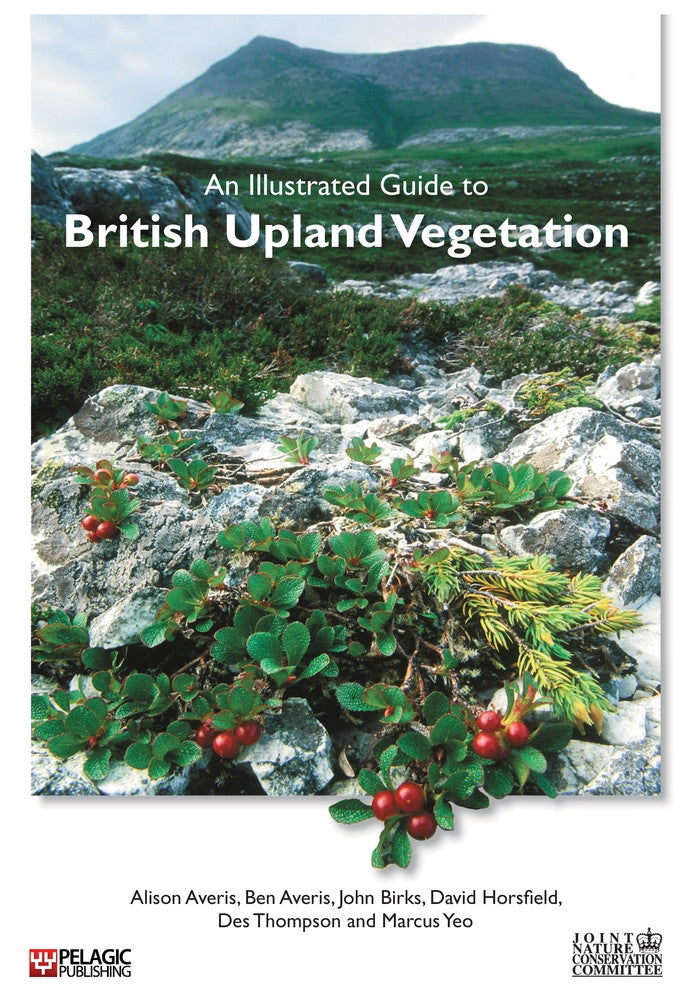
An Illustrated Guide to British Upland Vegetation
- Provides concise descriptions of all currently recognised British upland vegetation types
- A key enables the reader to classify vegetation in the field
- Uses the Rodwell classification
- Here is an outstanding companion and rich information-source for all whose occupations and interests lead them to the uplands.
—Prof Charles Gimingham
- plant community
- plant ecology
- plant taxonomy
- plants
- upland
- vegetation
Description
An Illustrated Guide to British Upland Vegetation is the first comprehensive, single book on plant communities in the British uplands. It provides concise descriptions of all currently recognised British upland vegetation types. Written by a team comprising some of the most experienced upland field botanists and ecologists in the UK, the book brings together all of the upland communities described in the National Vegetation Classification together with a number of previously undescribed assemblages of plant species.
A key enables the reader to classify vegetation in the field. Each vegetation type is described clearly and vividly, with guidance on how to differentiate between similar looking communities. There are detailed sections on the ecology, conservation and management of each community, and up-to-date distribution maps.
This is the outcome of many years of field work in the British uplands, much of it supported by the UK Government conservation agencies. The book will be an indispensable guide for anyone with a keen interest in the uplands, notably ecologists, land managers, lecturers, and students, as well as the many organisations actively involved in this special environment.
This book is a reprint edition of ISBN-10 1-86107-553-7 (2004).
Readership
Ecologists, land managers, lecturers, and studentsReviews
- Using the Rodwell classification, the authors have blended in their own ecological expertise to produce - at last - an account of British upland vegetation which is readable, visual and comprehensive. Its value to nature conservation will be immense. —Dr Derek Ratcliffe, former Chief Scientist, Nature Conservancy Council
- Here is an outstanding companion and rich information-source for all whose occupations and interests lead them to the uplands. It not only furnishes a clear and ‘user-friendly’ guide to the diversity of vegetation types, but also provides a masterly overview of the upland environment. —Professor Charles H. Gimingham, Former Regius Professor of Botany, University of Aberdeen
About the Author
Alison Averis has worked mainly on upland and montane vegetation since the 1980s, when she was a member of the Nature Conservancy Council Upland Vegetation Survey team. Her PhD was a study of the ecology of a community of oceanic liverworts in upland heaths in western Britain. She has also studied vegetation in Ireland, Norway and the Faroe Islands.
Ben Averis worked for some years on woodland vegetation and bryophyte (moss & liverwort) surveys, but since 1990 has worked in a very wide range of upland and lowland habitats in Britain. His MPhil was a study of bryophyte flora and ecology in over 400 woods in the Scottish Highlands and Islands. He has also studied vegetation in Ireland, Norway, the Faroe Islands, France and Japan.
John Birks is professor emeritus in the Department of Biology, University of Bergen. His research interests include quaternary palaeoecology, pollen analysis, vegetation history, quantitative palaeoecology and palaeolimnology, quantitative environmental reconstructions, community ecology, plant geography, bryology and alpine plant ecology.
Des Thompson is Principal Adviser on Biodiversity with Scottish Natural Heritage (SNH), managing policy, research and advisory work on biodiversity and climate change. He has led some of Britain’s upland nature conservation work for the government and its agencies. Hailing from the Scottish Highlands, he graduated in biology at the University of West of Scotland, and took his PhD and DSc from the University of Nottingham. He is Chairman of the Field Studies Council.
Marcus Yeo is CEO of the JNCC, having been Head of Planning and Resources and Head of Habitat Advice. He spent nine years with the Countryside Council for Wales, first as a Vegetation Surveyor, before becoming their Upland Ecologist from 1993 to 1999. He has a personal interest in nature conservation, in particular bryophytes, being an active member of the British Bryological Society.
Bibliographic Information
 454 pages
454 pages - Figures
- 16 b/w plates
- BISAC SCI011000, SCI020000, SCI087000
- BIC PST, PSAF, PSAB





